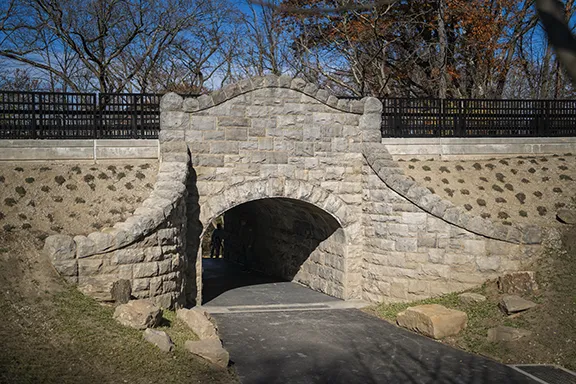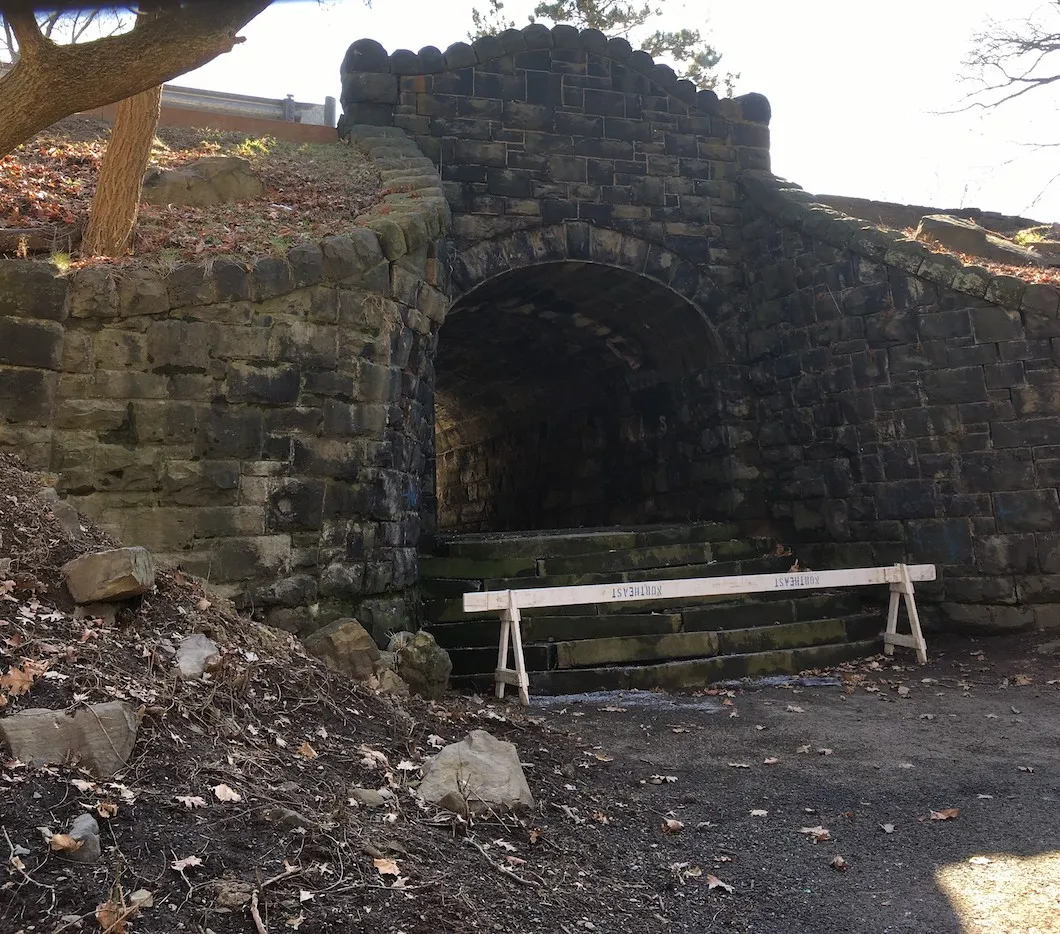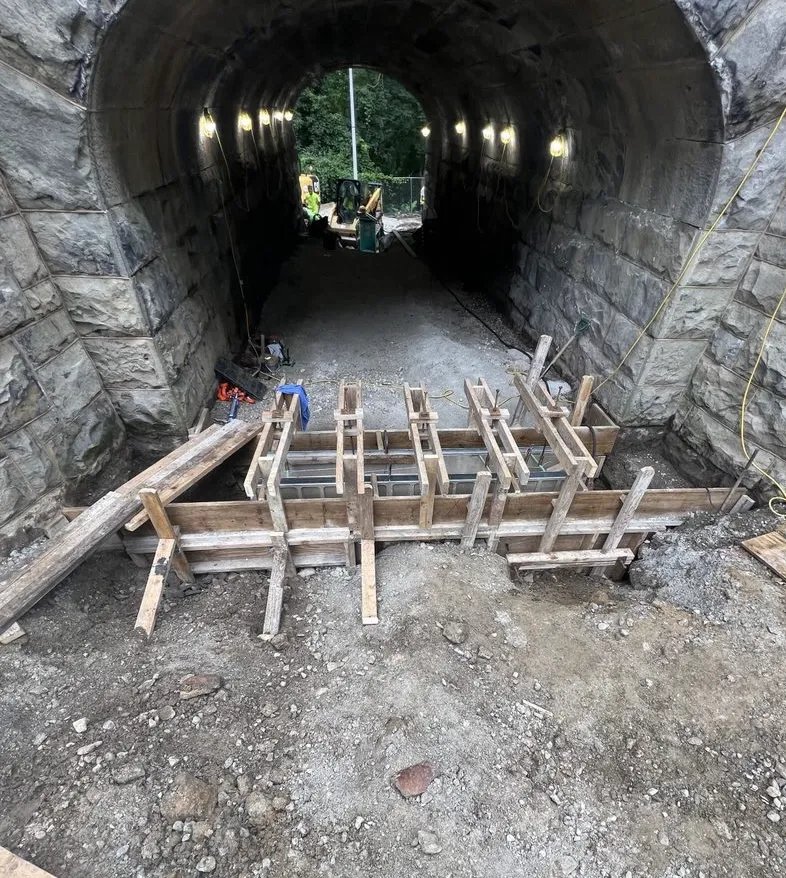Graciano Corporation recently completed a two-year restoration of Pittsburgh’s historic Highland Park Pedestrian Tunnel working with the City of Pittsburgh and with help from The Pittsburgh Parks Conservancy. The tunnel was closed because of deterioration and safety concerns. Erosion, weather, and tree roots were pushing out stone blocks and the arched tunnel was in danger of collapse, according to Casimir J. Pellegrini, engineer for the City of Pittsburgh.
The History Of The Highland Park Pedestrian Tunnel
According to the Highland Park Community Council, Highland Park (the public park) overlooks the Allegheny river and consists of 500 acres. The Highland Park Pedestrian Tunnel was built around 1895 from stone quarried at the park as a safe passageway for access to the original Highland Park Zoo and a monument to Alexander Negley, one of Pittsburgh’s earliest settlers, according to Susan M. Rademacher, curator for the Parks Conservancy.
Graciano’s Restoration Process
The city hired Graciano Corporation, Pittsburgh’s masonry restoration company, to stabilize the structure. Masons removed rocks and abutments on either side and on top of the tunnel along Reservoir Drive. All have been numbered and cataloged so they can be replaced in their exact original positions, Pellegrini said. The stone is being stored on-site and secured with fencing. An engineering firm determined the Highland Park Pedestrian Tunnel arch is secure and hasn’t moved since it was built, Pellegrini said.
It is one of three stone arch pedestrian tunnels in city parks, according to Rademacher. The idea of park pedestrian tunnels known as the “separation of ways” was invented by famous landscape architect Frederick Law Olmsted. The tunnel was a very popular scenic attraction during the Victorian Era. Slopes on either side were landscaped with boulders and greenery. Postcards from the era feature women with parasols and children posing beside the tunnel and on its slopes.
“It really is one of the unique, original features in the park,” said Monica Watt, a Highland Park resident and former president of the Highland Park Community Council. “It was just a wonderful area where families used to be able to stroll on a nice day.”
Glenn Foglio, President of Graciano, attending the ribbon-cutting ceremony, stated “We were so pleased to have been selected to restore this historic structure that is again being used every day by Pittsburgh residents.”
End Note:
As a leader in masonry restoration, preservation of historic landmarks, restoration, beautification and repair, our team of masonry restoration professionals are committed to providing quality in every project that we work on. Learn more about our historic masonry renovation projects in our portfolio!
Content Credit: TribLive




![IMG_9712[1]](https://graciano.com/wp-content/uploads/2023/11/IMG_97121.webp)
![IMG_9706[3]](https://graciano.com/wp-content/uploads/2023/11/IMG_97063.webp)
